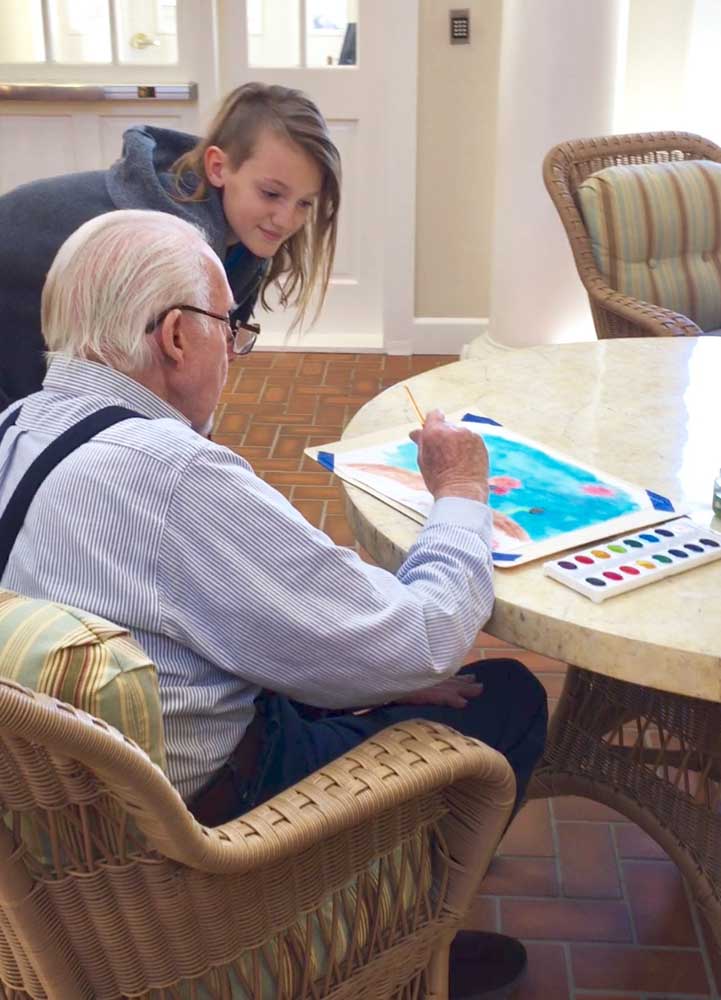Q&A with an art therapy organizer
Published 9:06 am Tuesday, May 9, 2017

- Ron Boggs, 88, paints as Fiona Callaghan, 11, looks on as part of the "I'm Still Here" painting project. (Submitted photo)
Who: Pamela Seidel is one of five Portland State University graduate students doing a three-year Masters of Social Work cohort in Bend. Together, the five have organized the “I’m Still Here” project, in which people living with Alzheimer’s and dementia at the Brookdale Bend memory care facility paint watercolors. An exhibit of “I’m Still Here” works will be up at Lone Pine Coffee Roasters, 845 Tin Pan Alley, in downtown Bend, through the month of May. An opening reception will take place at Lone Pine from 5 to 8 p.m. Friday during First Friday Gallery Walk.
Q: How did the show come about?
A: I’m a court-appointed guardian and conservator, mostly for elders who have Alzheimer’s and dementia. I also had a local preschool here, Bend Montessori School. In working with both young children and elders, there are a lot of similarities: With the little ones, and with the elders, a lot of times, I think, they just want to be heard, especially with our elders who are in memory care. If I put myself in their shoes, what would I say? The first thing that came to mind is I would say, “I’m still here!” Over the years I’ve taken art and actual Montessori materials to elders, and then started this MSW program, and we had a group project in a social justice class. I just thought, you know what, it’s time to just pull together, and we did, and involved Brookdale Bend. … (We) took watercolor and paper and paints, and I thought it would be nice to do a multigenerational piece. … They’re definitely an isolated part of the population … and they love the younger generations, so I thought it would be nice to create an awareness for all of us, including some of the younger Bend kids. I thought of my former preschool kids, and I think we have five of them who … will have painted with the elders.
Q: How many elders?
A: We have 11 elders ages 83 to 99.
Q: And they all have varying degrees of dementia or Alzheimer’s?
A: Yes, memory loss, Alzheimer’s, dementia-related diseases, whatever that is for them.
Q: In addition to being around the younger kids, does the art itself help them, would you say — participating in the process of creating it?
A: It’s interesting. I think it’s probably different for each person. … One was completely nonverbal. … she had had a stroke, and so she couldn’t use one of her hands properly, so she used her wrist underneath her painting hand to paint. She made a lot of dots, and then she was OK with switching color, and then she kept going. I thought, “Oh, this will maybe last a few minutes.” And she was at it for quite some time.
— David Jasper, The Bulletin






